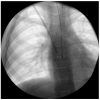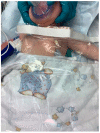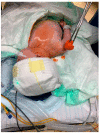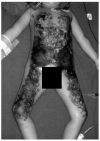Perioperative Hypothermia in Children
- PMID: 34299991
- PMCID: PMC8308095
- DOI: 10.3390/ijerph18147541
Perioperative Hypothermia in Children
Abstract
Background: First described by paediatric anaesthesiologists, perioperative hypothermia is one of the earliest reported side effects of general anaesthesia. Deviations from normothermia are associated with numerous complications and adverse outcomes, with infants and small children at the highest risk. Nowadays, maintenance of normothermia is an important quality metric in paediatric anaesthesia.
Methods: This review is based on our collection of publications regarding perioperative hypothermia and was supplemented with pertinent publications from a MEDLINE literature search.
Results: We provide an overview on perioperative hypothermia in the paediatric patient, including definition, history, incidence, development, monitoring, risk factors, and adverse events, and provide management recommendations for its prevention. We also summarize the side effects and complications of perioperative temperature management.
Conclusions: Perioperative hypothermia is still common in paediatric patients and may be attributed to their vulnerable physiology, but also may result from insufficient perioperative warming. An effective perioperative warming strategy incorporates the maintenance of normothermia during transportation, active warming before induction of anaesthesia, active warming during anaesthesia and surgery, and accurate measurement of core temperature. Perioperative temperature management must also prevent hyperthermia in children.
Keywords: anaesthesiology; children; hypothermia; infant; newborn; paediatric; perioperative; risk; warming strategy.
Conflict of interest statement
A. Bräuer is a member of the advisory board of 3M Europe and has received payments from 3M Germany, 3M Europe, 3M Asia Pacific Pte Ltd Singapore. and Moeck and Moeck GmbH, Germany for consultancy work.
Figures








References
-
- Torossian A., Becke K., Bein B., Bräuer A., Gantert D., Greif R., Höcker J., Horn E.P., Kimberger O., Klar E., et al. S3 Leitlinie “Vermeidung von perioperativer Hypothermie”: Aktualisierung 2019. [(accessed on 5 May 2021)]; Available online: https://www.awmf.org/uploads/tx_szleitlinien/001-018l_S3_Vermeidung_peri....
-
- von Bibra E.F., Harless E. Die Wirkung des Schwefeläthers in Chemischer und Physiologischer Beziehung. Verlag von Carl Heyder; Erlangen, Germany: 1847.
Publication types
MeSH terms
LinkOut - more resources
Full Text Sources
Medical

